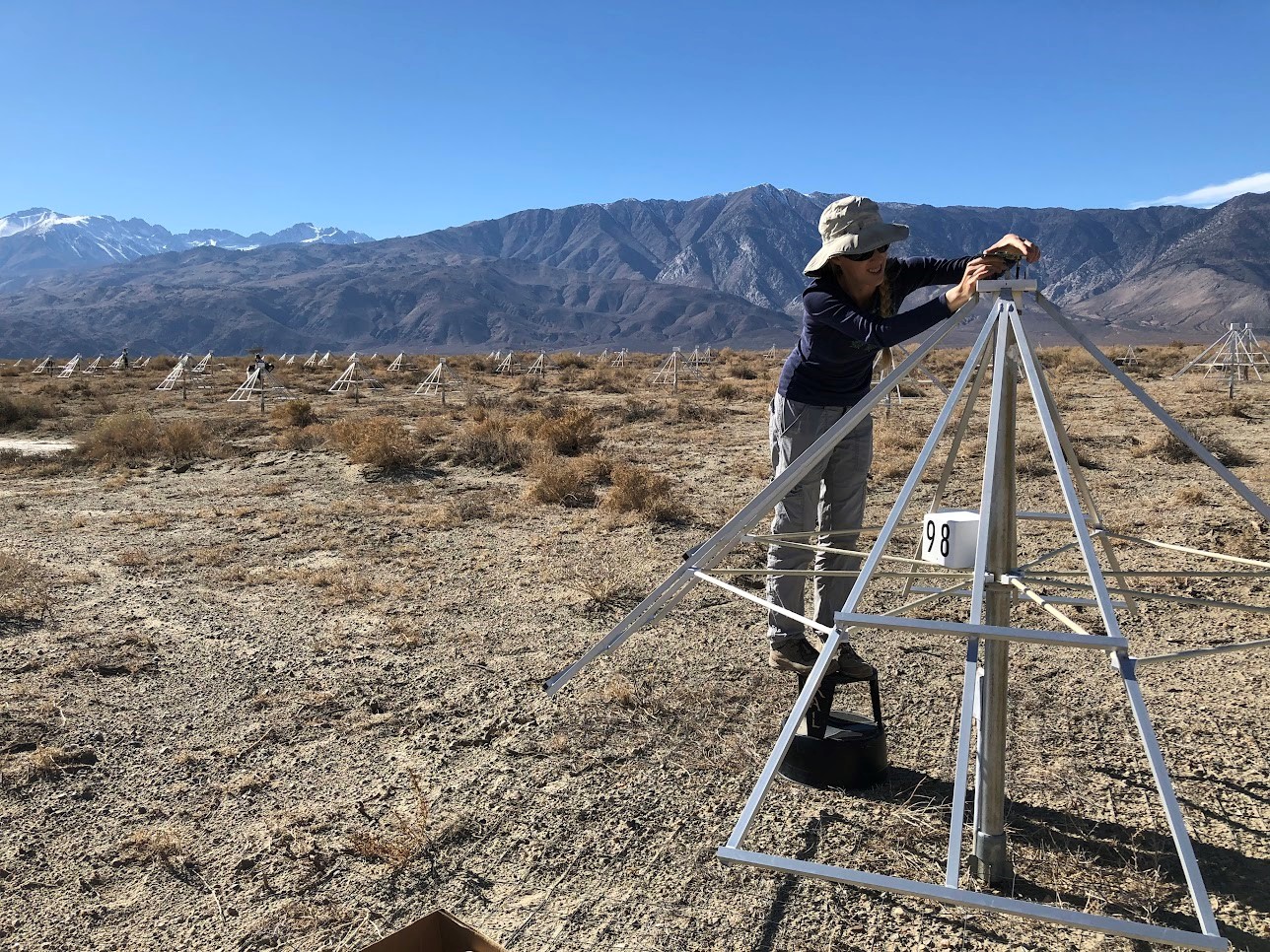Meet the 2021 KISS Affiliates

Kathryn Plant
Grad student in the Division of Physics, Math and Astronomy
Date of this Interview: June 15, 2022
What do you research?
I want to know where the highest-energy cosmic rays (charged particles traveling at nearly the speed of light) in our Galaxy come from. To study these particles, I am implementing novel digital radio signal processing techniques on Field Programmable Gate Arrays at the Long Wavelength Array at Caltech's Owens Valley Radio Observatory, in order to identify the brief (~10 nanosecond) flashes of radio waves produced by cosmic rays colliding with our atmosphere.
Why does space inspire you?
Studying astronomy answers questions about how we came to be and what other phenomena are possible. It also shows how special our home on Earth is, and how important it is that we work to keep it this good.
If you could instantly travel to any point in the universe, where would you choose to go?
I would love to explore the area around the center of the Milky Way galaxy (assuming this instant trip also includes protective equipment), where the star populations and interstellar medium are tremendously different from what we see in our night sky from Earth.
Where can you be found when you’re not conducting research?
Outdoors
What book do you wish you could read for the first time again?
Contact

In this photo Kathryn is changing electronics on one of the antennas in the Owens Valley Radio Observatory Long Wavelength Array, as part of an upgrade to the array. This might not be what most people picture a telescope to look like, but the antenna she is working on in the photo combined with all the antennas in the background form one big telescope that can make images of the sky or search for cosmic rays depending on how scientists process the signals.